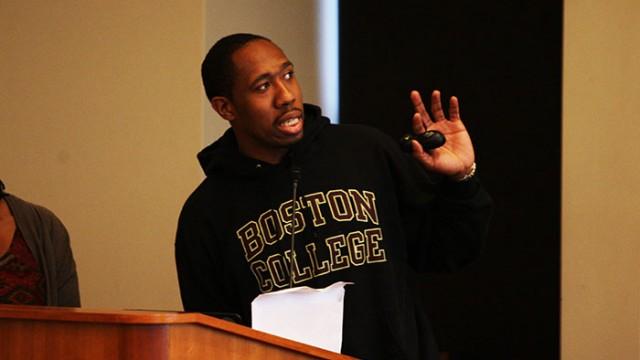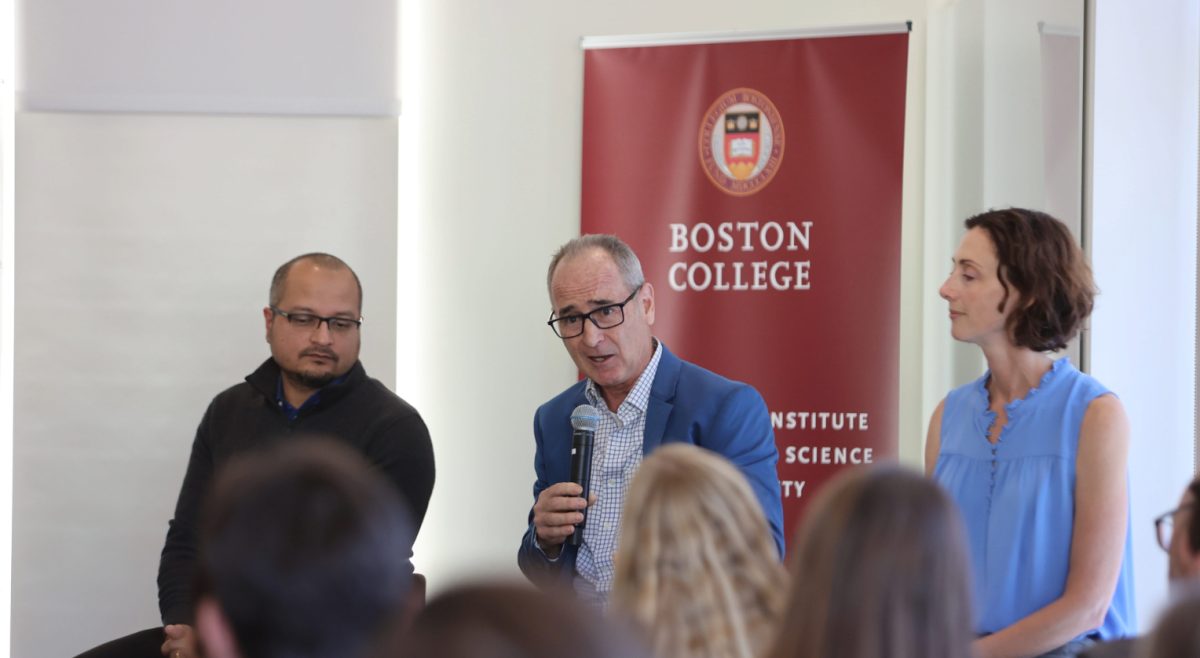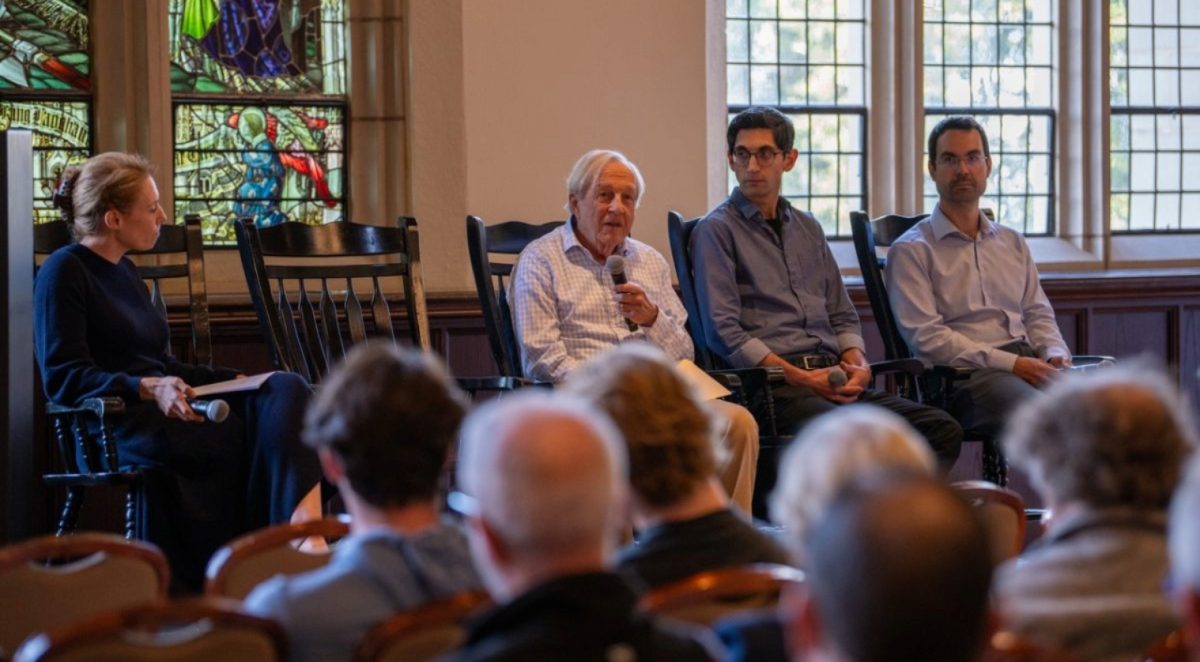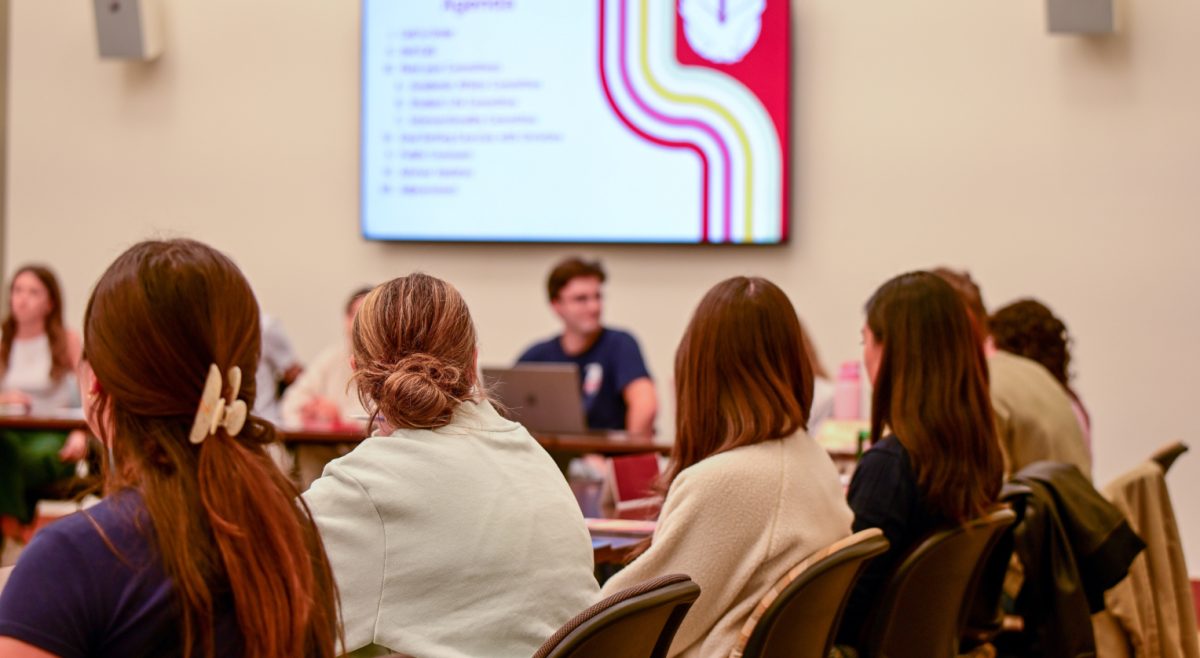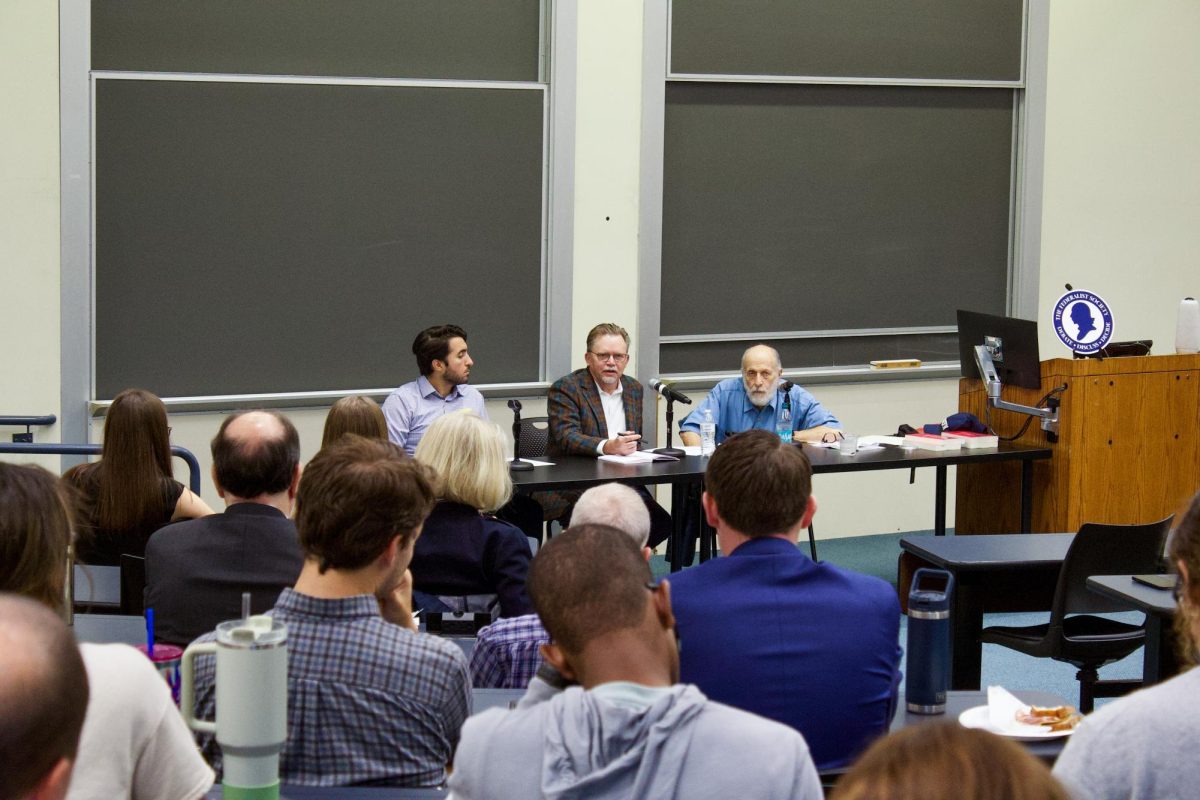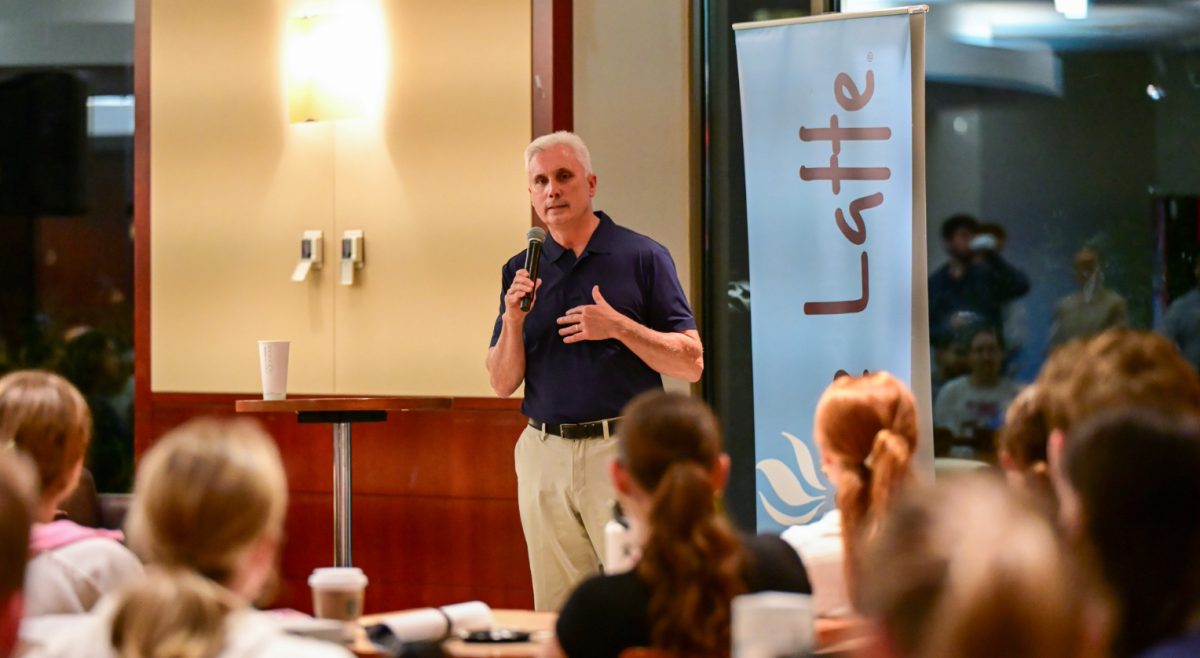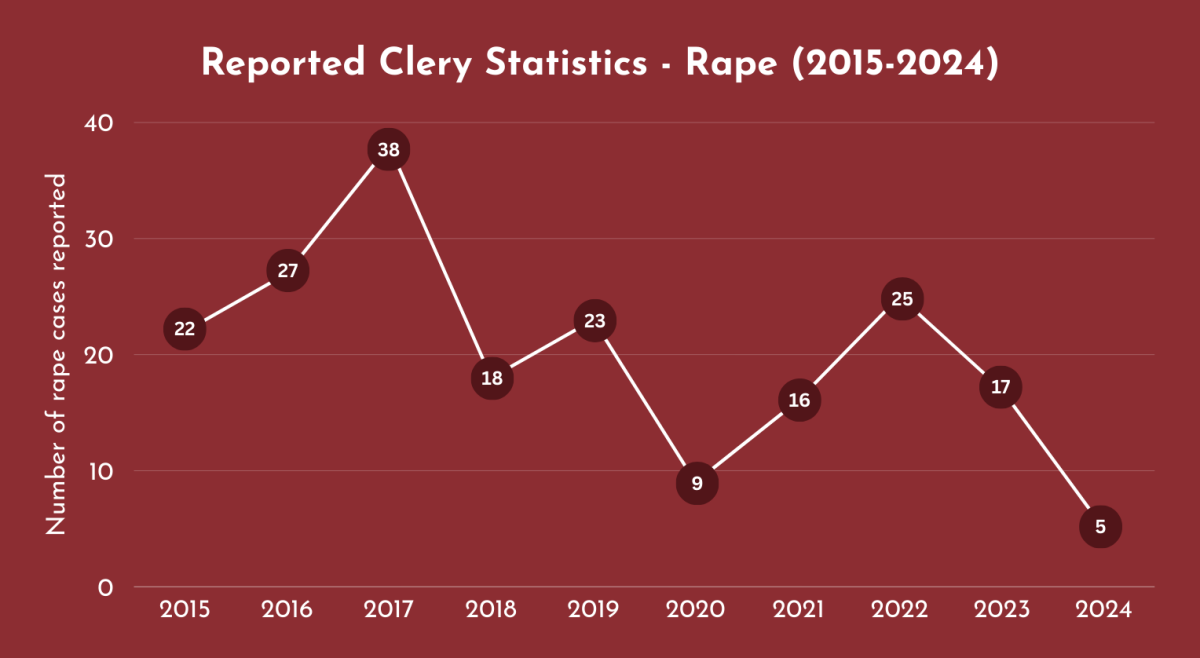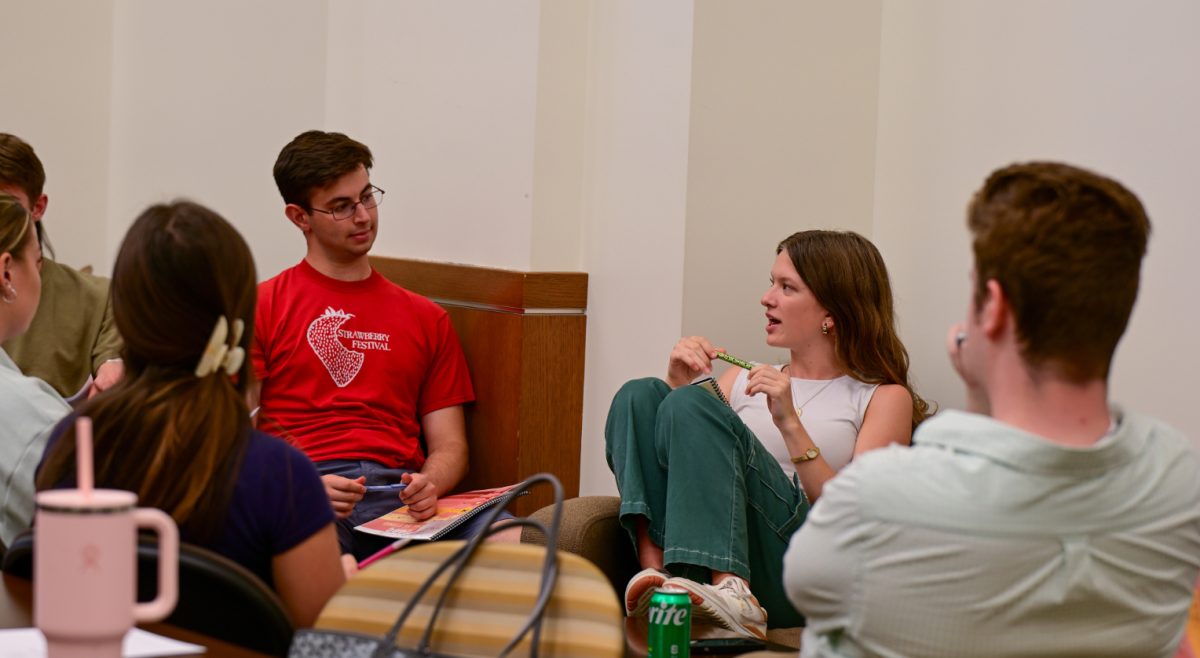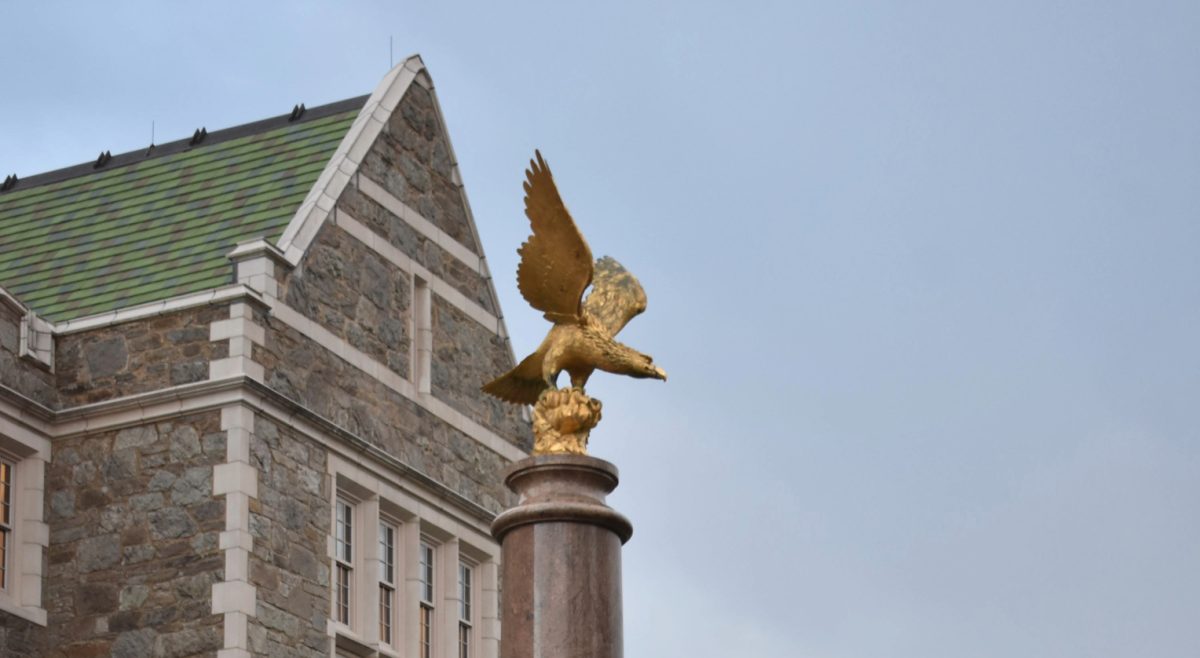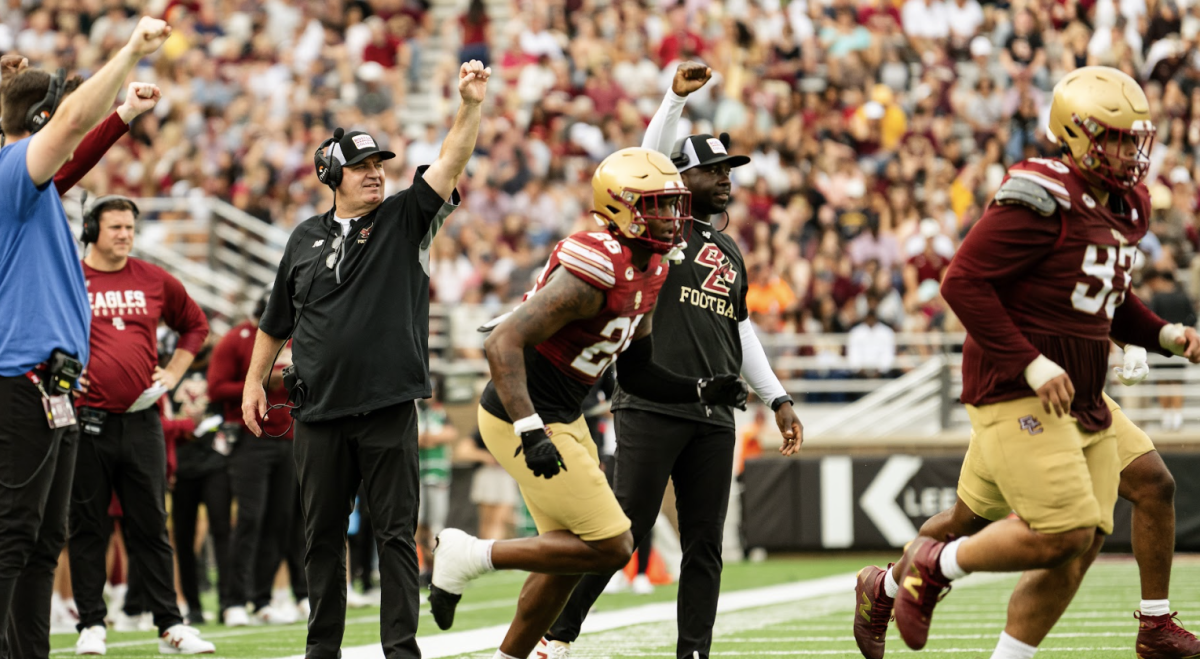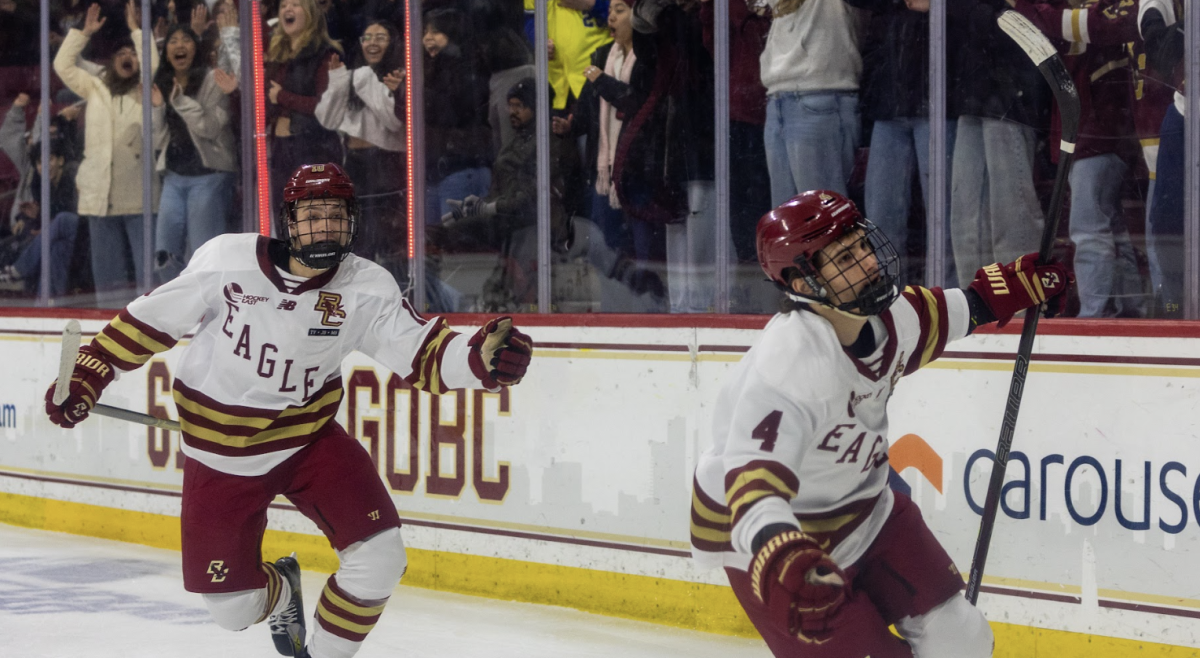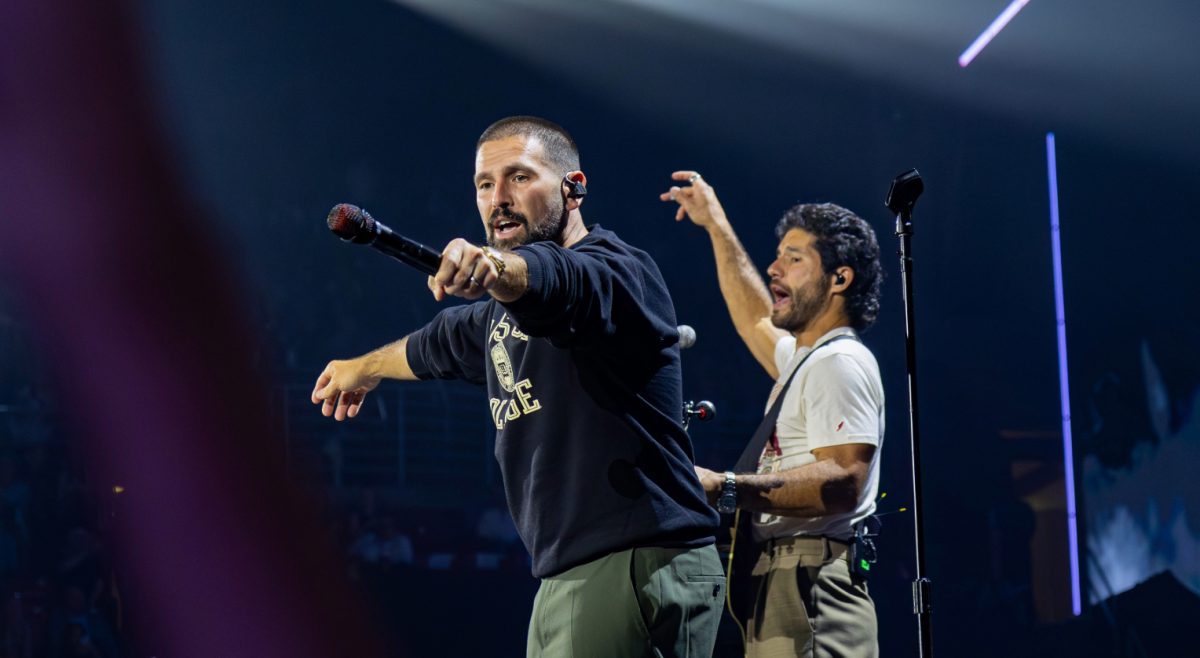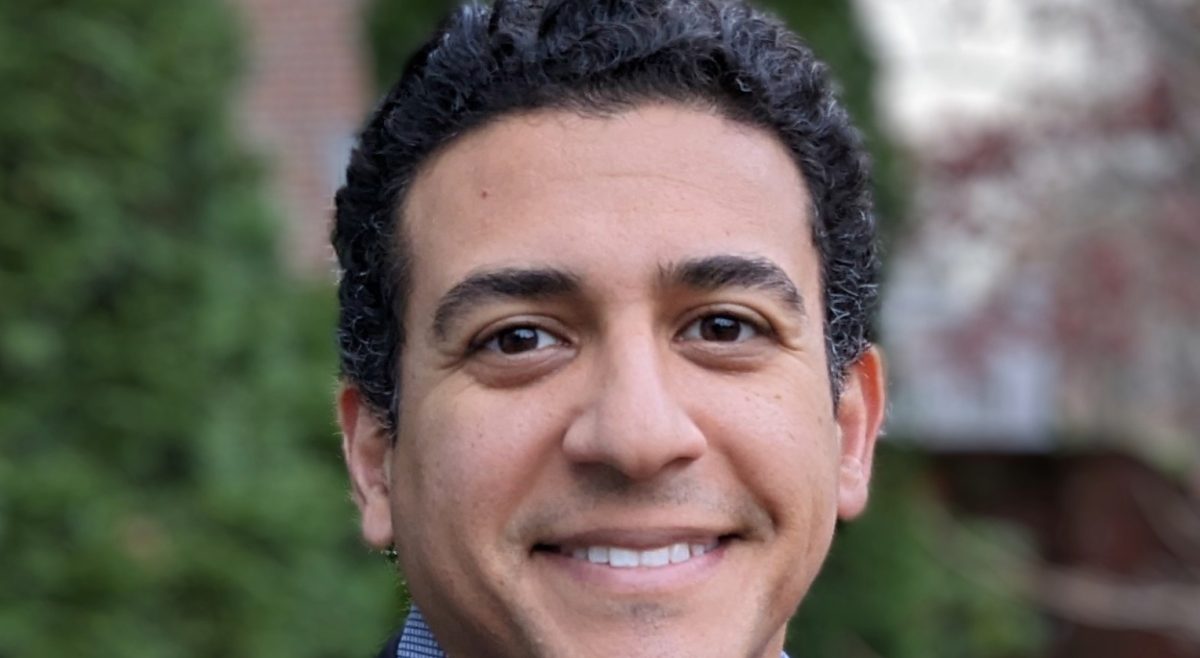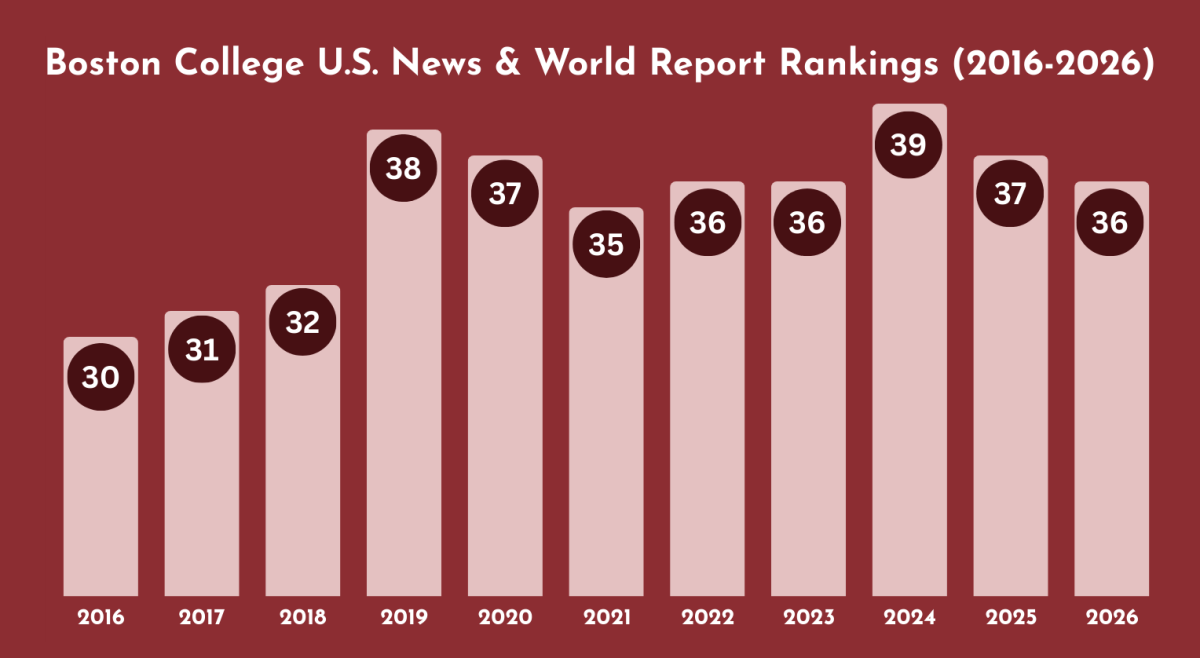About 150 students, faculty, and staff gathered around round tables in the Murray Function Room in Yawkey Center on Thursday night for a town hall meeting hosted by Afua Laast, Undergraduate Government of Boston College vice president of racial diversity and inclusion and LSOE ’16, and James Kale, chair of the AHANA Leadership Council and LSOE ’16.
The pair put the event together last-minute to educate members of the BC community on how the University currently supports students of color, what some of UGBC’s proposals for improving these institutions have been, and how the administration is responding to these proposals.
“We want to make sure this is a University conversation and dialogue,” Kale said.
On each round table, there were notepads, post-it notes, markers, and pens for audience members to take notes during the presentation.
Kale and Laast hope to expand the conversation going on between UGBC and the administration about diversity on campus to include the entire community.
“The purpose of this forum is to inform the campus body of the ongoing discussions around racial equity on campus and to garner feedback to plan next steps in the most inclusive way possible,” Kale said.
Laast said that she also hoped the audience would help to plan UGBC’s next steps.
“This is not a concrete draft,” she said. “This is still a work in progress, so if you have any information that we don’t and you just want to chime in, please do. None of us up here are experts.”
Laast and Kale started out the presentation with a timeline that showed the ways in which BC students have been calling for racial equality. The timeline began in 1968, the first year black students attended BC.
“In order to get anything done, we don’t work in groups—I just can’t have UGBC propose all of these things and the next day it’s going to happen. We need the whole institution on board with this because it is an institutional problem.”
—Afua Laast, Undergraduate Government of Boston College vice president of racial diversity and inclusion and LSOE ’16
The Black Talent Program, established in 1968, Family in Struggle Together, established in 1995, Obeying No Establishment, established in 2004, and the Black Student Forum, established in 2014, are a few of the groups that have been created at BC since 1968, Kale said, all of which have had the same goal of bringing racial equality to campus.
The event was focused on what UGBC is doing to promote racial equality, Laast said, but she recognized the fact that the University needs to support gender equality and equality among students from various socioeconomic backgrounds.
Last fall, Laast said, a group of UGBC students began to compare BC to other universities of similar size and ranking.
“It was just a group of students in UGBC thinking about what do we see on campus that needs to change,” Laast said.
The group came to the conclusion that it wanted the University to realize the existence of systematic racism in higher education, and it set out to work with the administration to bring about tangible outcomes—something that the previous racial inclusion groups failed to do, it said.
“The University was going through the 10-year plan, so we wanted BC to start thinking about diversity and inclusion on a bigger scale, and as well as to commit to and publish a timeline benchmark,” Laast said.
The group put forth a request that the administration create a plan for addressing racism on campus by Jan. 19. Over Winter Break, however, a group of students worked together to discuss what its course of action would be if the administration did not put forth a plan.
No plan was announced Jan. 19, so the current proposal set forth at the town meeting is the draft the students came up with over Winter Break. The proposal sets out tangible goals for the University to achieve with regard to combating racism and focuses on making changes in academics, the campus climate, and education.
The first aim of the proposal is to get institutional support, Laast said.
“In order to get anything done, we don’t work in groups—I just can’t have UGBC propose all of these things and the next day it’s going to happen,” Laast said. “We need the whole institution on board with this because it is an institutional problem.”
The plans included the implementation of an online cultural diversity forum that would be similar to the Alcohol Education program and bystander intervention course that all freshmen at BC take, Laast said. The administration responded to this request by establishing a training program that UGBC members, as well as resident assistants and faculty, have taken.
“It’s just a really cool time to sit and reflect and talk to the people around you about diversity and how you can actually have an impact on campus,” Laast said.
This program will be extended, Laast said. There is a contract currently under negotiation that will establish the training for the next three years, with the pilot program starting in the 2016-2017 academic year.
UGBC has also called for more funding and resources to go toward the Thea Bowman AHANA and Intercultural Center and Learning to Learn, which provides aid to low-income, underrepresented, first-generation, or disabled students.
Laast said that last semester when she walked into a class on the first day, she was surprised to see that her professor was black. This surprise, she thought was concerning, she said, because she’s currently a senior.
“Having more AHANA faculty on campus and just having people—administrators, students, faculty— will help expand the fact that people look like you so you can actually go further in life with your endeavors,” Kale said.
BC’s administration, Laast said, responded that it is working on increasing AHANA faculty on campus and learning more about why departing AHANA faculty choose to leave BC. It did not release an exact goal, given the difficulty of guaranteeing the hiring of an exact number of AHANA faculty by a certain date.
Laast and Kale also called on the administration to revitalize the core curriculum for undergraduates. They want to see a stronger cultural diversity component, because they believe that as it currently stands, students just take a class to get it over with.
This year, however, hybrid courses that satisfy both the cultural diversity core as well as another core requirement were introduced for freshmen. The courses, Laast said, attracted a large number of students and were successful in promoting conversation on diversity.
“It’s really important not to just clap diversity into things,” Laast said.
For the upcoming school year, the University plans on doubling the number of hybrid courses offered.
This fall, UGBC hopes to implement a “Conscious Week” that would be similar to Love Your Body Week but would promote racial inclusion on campus.
Laast said she would like to see diversity as ingrained in the BC identity as community service.
“You cannot be on BC’s campus for a day and not know that service is a big part of who we are,” Laast said. “And I think with that, also knowing that diversity and inclusion is a big part of who we are is really important.”
Correction: Afua Laast’s position was incorrectly stated as UGBC vice president of racial diversity and inclusion. Her position is UGBC vice president of diversity and inclusion.
Featured Image by Francisco Ruela / Heights Senior Staff

